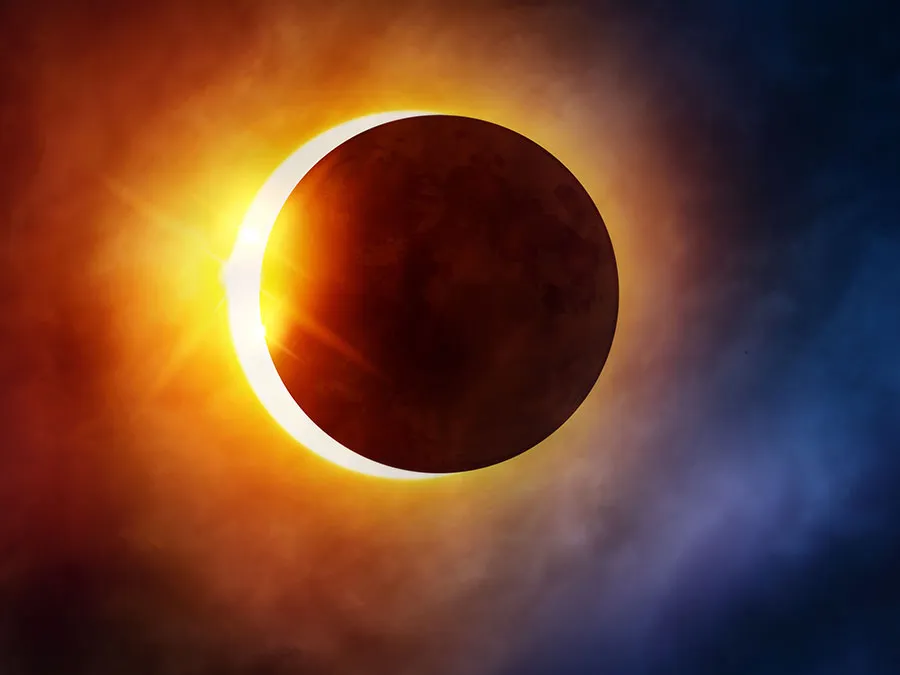Trends
7 Amazing Facts About The Solar Eclipse
In astronomy, the eclipse is referred to as the complete or partial covering of a celestial body by another. Find out more amazing facts about the eclipse here.

In astronomy, the eclipse is referred to as the complete or partial covering of a celestial body by another, and an eclipse occurs when three celestial objects become aligned. From planet earth view, the sun is eclipssed when the moon comes between the sun and the earth, and the mn is also eclipsed when it moves into th Earth shadow cast by the sun. Furthermore, eclipses of natural satellites such as the moon or of spacecraft orbiting occur as the bodies move into the earth’s shadow. An occultation is a phenomena that occurs when the apparent size of the eclipsed body is significantly smaller than the eclipsing body. Examples include when a star, nebula, or planet vanishes behind the Moon or when a satellite or spacecraft vanishes behind another body in the solar system. Below are some amazing facts to know about the solar eclipse:
READ: Facts About Egyptian Pyramids You May Not Know
1. Solar Happens in New Moon
A solar eclipse happens at New Moon, and a new moon occurs when the moon is between the sun and the earth.
2. North and South Poles
Total solar eclipses cannot be seen from the North and South Poles.
3. Future of the Solar Eclipse
According to scientific discoveries, the next total solar eclipse over the continental U.S. would happen in April 8, 2024. And it would depend on locations (on the center line). The duration of totality will last at least 3 minutes and 22 seconds on the east coast of Maine and stretche to 4 minutes and 27 seconds in southwestern Texas. After that eclipse, it would be a 20-year wait again, meaning, until August 23, 2044 (being similar to the 1979 event, it will be visible only in Montana and North Dakota). After then, total solar eclipses would follow in 2045 and 2078.
4. Wavy Lines (Shadow Bands) appear before or after a Total Solar Eclipse
There are wavy lines of alternately dark and light running in parallel at colored surfaces before or after a total solar eclipse and these bands are shadowy. These are brought on by the solar crescent’s refraction by the turbulence in Earth’s atmosphere.
READ: (VIDEO) How humans touch the Sun for the first time, making history
5. Staring Directly at a Solar Eclipse can result in Blindness
It is important to use a solar filter telescope to view the eclipse because staring directly at it can lead to blindness and damage to the eyes. This tool improves the clarity of the surroundings and is one of the best tools for observing the solar eclipse. Also, commercial solar eclipse glasses or weldering glasses can also be used if a solar lifter telescope is not available.
6. Elipses in Mars
Each year, hundreds of sun eclipses occur in Mars. However, because Phobos and Deimos, the moons of Mars, are smaller, only partial solar eclipses are possible. Additionally, Phobos can occasionally block out Deimos (moon-to-moon).
READ: 7 Hidden Facts To Know About Bola Ahmed Tinubu
7. Future Solar Eclipse
A solar eclipse that will be one of the longest in thousands of years will occur on July 16, 2186. The Galapagos Islands, the southernmost tip of the Espanola Islands, the northernmost tip of Ecuador, Isla Santa Rosa, central Colombia, Bogota, central Venezuela, and northern Guyana are all likely to see the eclipse pass within a 4-minute time frame.
